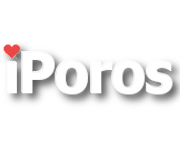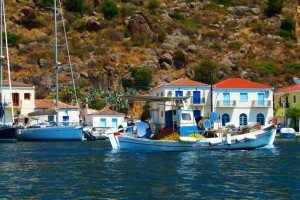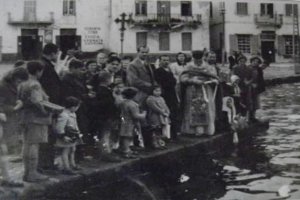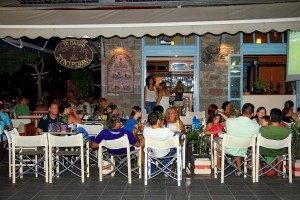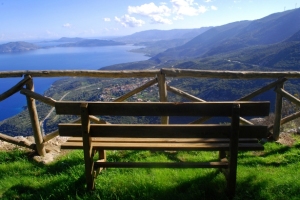
With a maritime tradition rooted in antiquity, it’s hardly surprising to see the diversity in Greek boatbuilding as the shape of bow and stern and number of masts were determined by the types of sea in which the boats sailed as well as their purpose—transport or trawling or other types of fishing. Like most islands, Poros has its own boat traditions.
The most common boat you’ll see moored around Poros is a small varkala, a single-masted boat with a high stern. The design was inspired by the traditional varkala of Hydra, an island just 10 nautical miles away, and the type is known as the Hydraikos varkalas or more simply papadia, which is also the name of its wide stern. Another characteristic is the positioning of the stern post vertically to the keel.
These traditional wooden boats are not longer than seven meters. The high bow makes it seem as if the boat slants downwards towards the back. One of the boat’s main features is its light weight and deep hull, which allow the boat to be pulled easily towards the shore. The boats are used for all types of fishing today, although they were traditionally used for sponge-fishing and fishing with a glass plate or mask.
Take the time when strolling along the quay to observe the different sizes, colors, and slight variations in their construction and shape. You’ll find several fine examples of the varkalas moored along the waterfront from Evangelismos to the far end of Pounta as well as along the shoreline from Gefyraki in the direction of Neorio.
By Diane Shugart
Research by Spyros Pavlou


